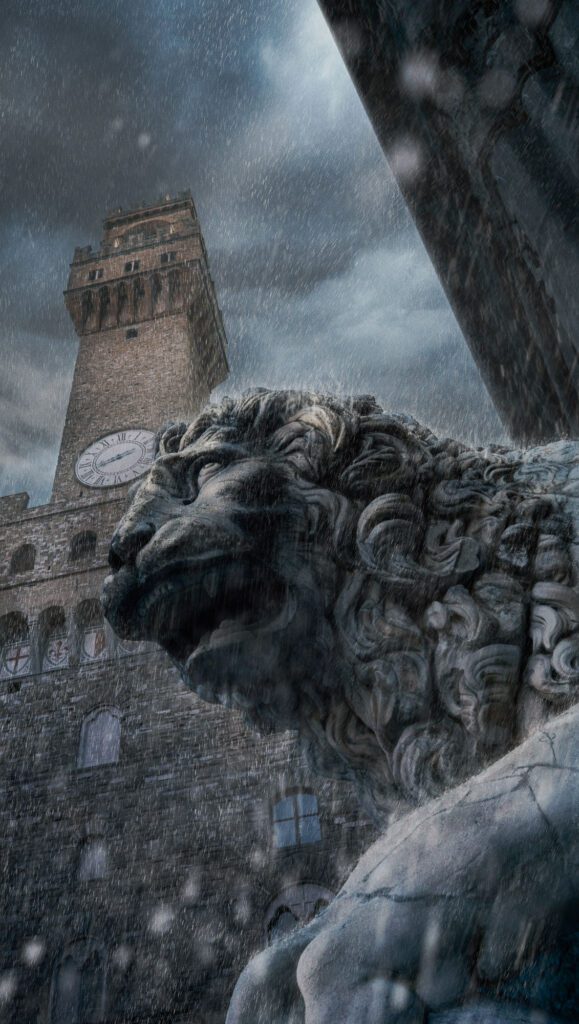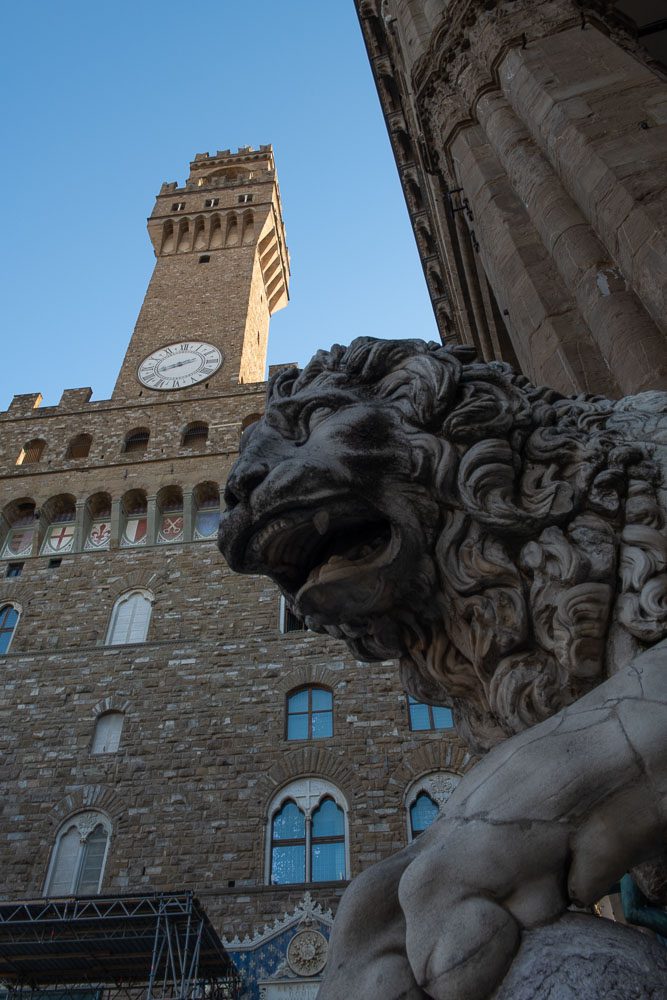
The Lions at the entrance to the Loggia dei Lanzi in Piazza della Signoria have been iconic symbols of Florence since time immemorial. From the 17th-century “Grand Tour” visitors to the modern-day selfie-snapping tourists, these majestic sculpted animals embody more than the potential for a good photograph; they represent one of history’s most powerful cultural depictions.
The origins of the lion statues we see adorning everything from government buildings to private residences in various countries dotted throughout the globe have a rich and fascinating history. These statues are believed to have originated in ancient Greece, where the Lion was seen as a symbol of power and loyalty. Over time, this symbolism spread throughout Europe, and the Lion became a popular motif in art and architecture.
The de Medici family had a profound impact on shaping the destiny of the Tuscan city of Florence. This powerful banking family influenced the city’s culture, art, architecture and politics. Through their patronage, they fostered an atmosphere of innovation and creativity. Without their influence, the Renaissance may not have flourished as it did in this city standing on the banks of the river Arno.
The majestic Lion has been closely associated with the Medici’s featuring prominently in sculptures and paintings commissioned by the family, and can be seen in various forms across their palaces and public buildings in Florence. The Medici Lions embody a symbolic message of power and strength; as such, the public would see these sculptures as an official seal of approval from the ruling family. Beyond that, many believe the lion statues symbolise courage, intelligence, leadership, and justice—valuable qualities attributed to Florence and its patrons during the Renaissance era.

The image featured in this post has been Photoshopped. At the post-processing stage, the colour palette has been skewed towards the cooler tones, the sky has been replaced, and the rain has been painted in. Ansel Adams is attributed to have said, “You don’t take a photograph, you make it”, and this thought ran through my head as I knelt before the statue and framed the image, as compositionally it had potential; however, it lacked any drama. Stylistically I wanted to convey a sense of emotion and atmosphere, and Photoshop was simply an additional tool to achieve the effect. Now, this leads me to a question. Is there such a thing as an unmediated image? Surely the simple task of selectively deciding what to include or exclude in the camera viewfinder is already a seismic shift to the narrative of a scene.
Since its invention in the early 19th century, photography has come a long way. However, one thing remains constant—images have always been subject to manipulation. Photographers have found ways to alter images to fit their desired aesthetic, from stylistic techniques like the Pictorialism movement to more recent digital tools like Photoshop. This begs the question: is there such a thing as a straight image? Can we trust what we see in photographs? As photography continues to evolve, so does our understanding of the art form and its potential for manipulation. The adage “the camera never lies” may have been true once, but it’s never been more apparent that what we see in an image is only a version of reality. Photography has always been inherently subjective, no matter what techniques or tools are used. It is up to the photographer to decide on aesthetics and narrative. And for the viewer to perhaps wonder what lies beyond the frame.
The image featured in this blog post reminds us of the importance of symbols and how our interactions with them can motivate action. While photography has historically been used to create an impression of truth, we must never forget that it is but one part of the creative process – a process where manipulations are so often made for us to interpret more meaningfully. The iconic Lion statues that adorn the Loggia dei Lanzi in Florence stand testament to this idea- they evoke a history, symbolise power and authority and continue to speak volumes.
